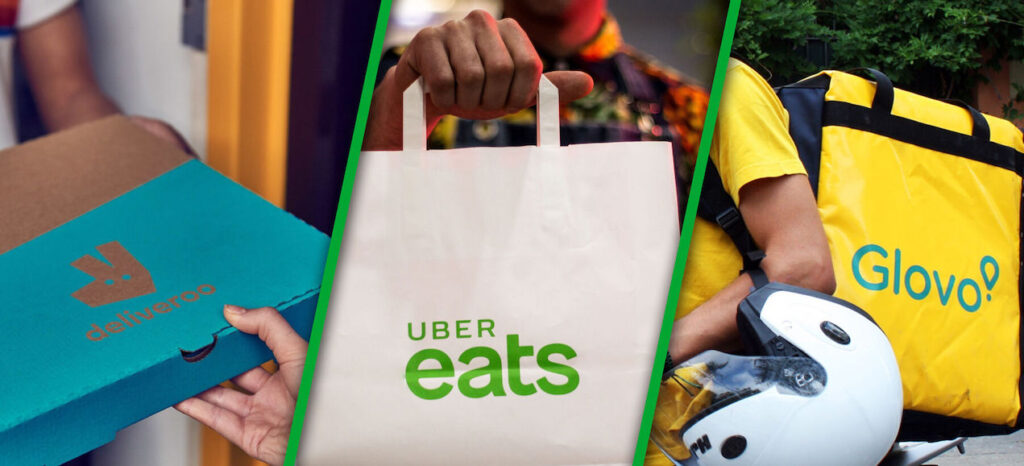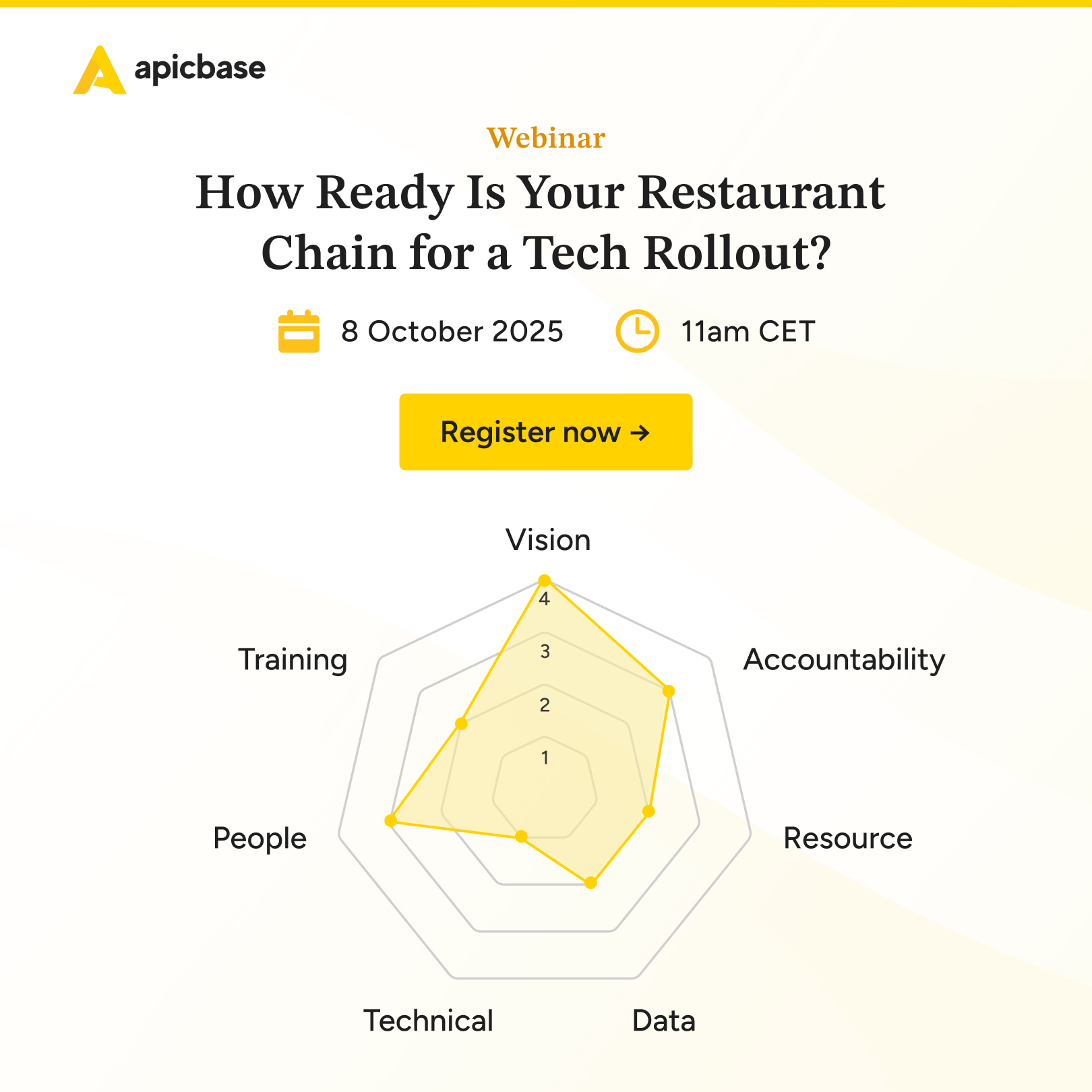Trends in foodservice often turn out to be a fad – temporary and harmless. Remember the cronut – anyone? The trends that shape 2020 are a different kind of animal altogether. They are transforming the business to its core.
This transformation isn’t new. The industry has been reinventing itself for some time now. 2020 will, however, be the year where things take on a definite new direction.
Before we set out to discover the trends of 2020, let’s have a look at the drivers behind the trends.
First of all, what drives a trend is often the quest to overcome a challenge: for the restaurant industry, two critical obstacles take the lead, the hiring and training of staff and high costs. Add to this the ever-rising levels of competition in the market and you know that keeping the bottom line without raising prices has become more challenging than ever.
Secondly, changing consumer needs and interests. Yes, we have to talk about Millenials. A staple in lists like these, but for all the right reasons. Millennials, born between 1980 and 2000, are the biggest group of consumers ever, bigger than the boomers even, and are entering their peak earning years.
Millennial spending habits will shape the restaurant business for many years to come.
They are digitally savvy and demand personalisation, customisation, convenience, transparency, health and experience.
For Millennials waiting is not an option. They (or should I say: we?) are used to on-demand service.
“Today, customers expect to have a wide range of eating options available at all times”, says foodie Ilse Duponceel of Dolce Magazine. “Traditional concepts such as breakfast, lunch and dinner almost seem like a thing of the past.”
Today, customers expect to have a wide range of eating options, available at all times.
Ilse Duponcheel
Co-Owner Dolce Magazine
Consumers want to order online, choose between an array of healthy, sustainable, well-prepared meals and have them delivered to their doorstep. The whole operation must be an effortless experience: the fewer the steps to take, the better.
The demand for food services keeps getting bigger. The global foodservice market size was worth US$ 3.4 Trillion in 2018 and is expected to reach a value of US$ 4.2 Trillion by 2024.
Have you noticed? The previous paragraphs could have also featured in a 2018 trends list.
Then, what’s different this year?
The difference is technology; it is ready now to take on the challenges of a changing market and help food businesses tap into the growing demand.
Technology is the enabler to keep customers happy, handle employee turnover and boost the bottom line.
Let’s have a closer look at the trends for 2020.
1. The rise of the Dark Kitchen
“Food delivery is here to stay”, says Jan Hollez of software company Deliverect at ‘Data meets Hospitality’.
It is expected to grow about 6.5 per cent per year by 2023 as consumers become more familiar with online and mobile ordering.
“About 25% of our turnover derives from delivery these days. Yet it is important to analyse where it comes from and for us to see it as an additional income as our in-house sales are still growing with 9% YoY – delivery 90% YoY on the other hand”, confirms Peter Van Praet, founder & concept guardian of Bavet.
A catalyst for the growth of home delivery has been the rise of 3PD’s, third party delivery services, like UberEats, Deliveroo and Takeaway.com.
Kitchens are now cooking for dine-in customers and the delivery channels. The growing demand puts pressure on production, people and delivery times.
Enter the dark kitchen.
Dark kitchens are food production units that sell meals exclusively through delivery. They are also known as ghost kitchens, virtual kitchens or cloud kitchens.
And we will be seeing more of them in 2020.
New dark kitchen business models are popping up everywhere. Restaurants pool resources in a multi-restaurant dark kitchen model, while others prefer to cook in their own ghost restaurant. Some are owned by aggregators, others are restaurant-owned or fully outsourced. Some restaurant-owners work under a delivery-only brand name.
Thanks to off-site dark kitchens home delivery orders don’t get in the way of dine-in orders. A separate kitchen for home delivery cooking takes away pressure on production and allows for the creation of delivery-focused workflows in the ghost kitchens.
Dark kitchens help food businesses maximise revenue out of the delivery channel, without jeopardising operations at the brick-and-mortar channel.

2. Frictionless Guest Experience
Customers don’t just expect excellent service any more. They expect a personalised experience.
The applications that help make this experience happen are also helping foodservice businesses eliminate overproduction, overstocking and overstaffing.
Imagine having predictive insights into what each guest is likely to order and being able to purchase the right amount of fresh products and beverages, down to the hour, or having a fully automated back of the house, allowing chefs and F&B to focus on providing incredible guest experiences, with precisely the right number of staff on hand to make it happen.
Thanks to the information apps for online ordering, ePOS, food management, and so on are providing about customer interests the prospect of minimal waste and maximum efficiency is no longer a far-fetched dream.
Jan De Kimpe, Dolce Magazine: “Five years ago, few restaurants even had a simple customer database. These days data comes in from all angles, paving the way for accurate, personalised service.”
Five years ago, few restaurants even had a simple customer database. These days data comes in from all angles, paving the way for accurate, personalised service.
Jan De Kimpe
Owner Dolce World
Online ordering platforms, booking apps, ePOS-systems and food management systems are pumping out customer information.
Ilse Duponceel illustrates how taking away friction helps to make workforce planning more efficient:
“When booking a hotel room online, I was offered to enter the sort of food I liked, if I would enjoy going to a local bar and so on. In short, the information I more than likely would have asked upon arrival in the hotel, just like 90% of guests would.
This time, however, I didn’t have to ask. The night before my arrival at the hotel, I got a personalised e-mail with the town highlights, where I should go for a vegan bite and how I could get from A to B.”
People today find all answers on their phone. The hotel nonetheless managed to deliver extra value with a simple e-mail.
And, in one sweep, free up reception staff to help guests elsewhere in the hotel.
3. The Boom of Fast Casual Dining
According to the yearly Foodservice alliance report, the fast-casual segment in Belgium has grown 15,4 % between 2016 and 2018.
Fast-casual restaurants have been booming in the past couple of years and will continue to do so in 2020.
Fast-casual restaurants are affordable and convenient, like quick-service restaurants, but offer a quality meal and a comfortable sit-down dining experience.
Sometimes that is all we want: sit down, have a healthy meal after work and be home in time to finish the last two episodes of our favourite Netflix-series.
Just like home delivery does, fast-casual rides the wave of convenience.
People know what they are going to get; they know it is going to be good and on their plate in no time.
Understanding customer needs has been the secret to the success of fast-casual dining from the start. It is no surprise these businesses fully embrace customer-data.
Gut feeling is one thing, but it is the data that helps grow restaurants into multi-site companies.
Another reason fast-casual restaurants continue to boom is the use of focused menus.
Focused menus, with a limited number of options, allow for better planning, a calibrated mise en place, measured procurement and a lean stock.
All of which help in keeping costs down and quality up.
It also makes it easier to standardise the back-of-house operations. A requirement if you are planning on opening more than one unit.

4. Back-of-house goes Digital
‘How to boost the bottom line?’. It’s the million-dollar question.
You have a couple of options: growing your market share, but that takes time. Raising prices, but, most of the time, that is out of the question.
So what else can you do?
A third option is to monitor costs of food, inventory and procurement — an arduous, time-consuming and often inaccurate task that involves lots of spreadsheets.
These days technology offers a solution. Kitchen management software helps to streamline, automate and monitor back of house operations.
In a recent study, Forbes notes:
“One thing sure stands out: there has been a notable shift toward a growing number of solutions focused on back-of-house operations and systems (versus guest-facing solutions).”
Up until recent restaurant tech solutions were mostly aiming to increase the guest experience, but TechTable now says:
“We are encouraged by the continued push towards smarter B2B solutions that are helping restaurant and hospitality partners to increase efficiencies and more broadly, helping to combat the myriad of issues currently cannibalising margins.”
In other words, foodservice businesses digitise the back of house operations because it saves their staff time and cuts waste.
It brings costs down and ultimately boosts margins.
In 2020 we will see more restaurateurs and food services businesses make the switch to food management software. It is like the introduction of the ePOS. People will wonder how they got any work done without it.
John King, the executive chef of Pentahotels, said it best in an interview with Apicbase:
Software has had a significant impact on the speed with which I can get food and menus produced.
John King
Group Executive Chef Pentahotels
5. Platform vs Point Solutions
Point solution software has long been the go-to medicine for quick-fix digitising. An example of a point solution is a simple app for food cost calculations.
We predict a move to platform solutions.
Why?
Because they are better equipped to handle company and customer data and integrate all into one system.
Point solution software fixes a specific problem and is relatively easy to implement because it affects only a small portion of operations. Hence the success in recent years.
Platform solutions, on the other hand, offer an end-to-end solution for all processes of an organisation. In food management, for example, a platform solution is likely to integrate with POS, have an inventory module, margin control, procurement and planning tools.
Point solutions are excellent quick-fixes. The downside is that modern foodservice or hospitality businesses quickly end up with several applications to manage different operations – an app to keep inventory in check, an app to order with suppliers, an app for workforce planning, and so on.
If digitising is a way for you to make operations more efficient, then point solutions don’t do you any favours. They are information silos. Getting global insights out of them is hard and will almost certainly involve digging out the dreaded spreadsheets again.
Platforms are flexible, futureproof and offer a single dashboard to manage all kitchen operations.
6. The New Tech Workforce
Turnover in the restaurant industry is at an all-time high, at 75%.
Technology lends a helping hand. It looks like the, by many beloved, Thermomix was only the tip of the iceberg. Automation has entered the kitchen workspace, and it appears to be doing a very good job.
Rational has a SelfCookingCenter
At the far end of the spectrum, full robotic kitchens come into view. The Business Insider talked to Spyce, a fast-casual restaurant in Boston.
It promises to deliver salads and grain bowls in three minutes or less after you order from a kiosk.
But that isn’t even the most remarkable aspect of the restaurant. It is the fact that Spyce has only one human employee working in the kitchen.



